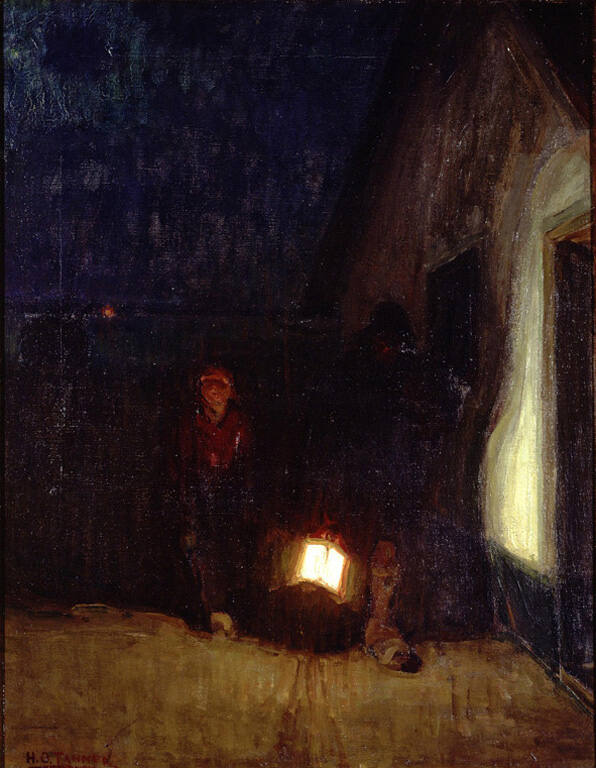Object Details
Artist
Henry Ossawa Tanner
Date
ca. 1905
Medium
Oil on canvas
Dimensions
26 1/4 x 19 3/4 inches (66.7 x 50.2 cm)
Credit Line
Gift of Helen O. (Stephen W.) Jacobs
Object
Number
79.029.001
Tanner was born in Pittsburgh, the son of a prominent Methodist minister (later bishop). His interes(…)
Tanner was born in Pittsburgh, the son of a prominent Methodist minister (later bishop). His interest in art began as a youth and eventually he became a student of Thomas Eakins at the Pennsylvania Academy of Fine Arts. Tanner taught for a brief period at Clark College in Atlanta. Finding the environment stifling in the United States, Tanner went to Paris in 1891 where he would live, a pioneer expatriate, until his death in 1937. Tanner enjoyed great success in Paris, receiving recognition from the French government and Salon juries. His principal subjects were landscape, genre, and biblical scenes. Tanner’s art alone would be sufficient to bring him to the attention of those interested in art, yet he is also significant as one of the first African American artists to achieve wide recognition, and his name is often linked with that of Booker T. Washington and W. E. B. DuBois. In the summer of 1900, Tanner began spending many of his holidays exploring the Pas-de-Calais district of northwest France on the coast of the English Channel; Night represents a scene from this region. A father and son return, after nightfall, from the sea to their home, the image lit only by the lantern held by the father. In a letter to friends, Tanner called Night “the best small picture I have ever done.” (From “A Handbook of the Collection: Herbert F. Johnson Museum of Art,” 1998)













